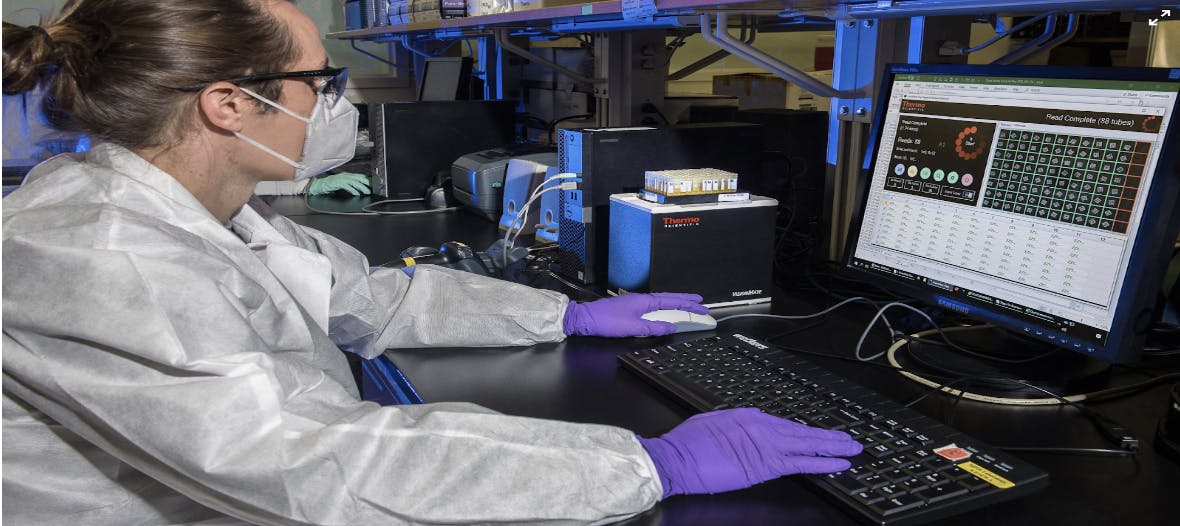TLDR: Exploring the Frontier of Science: Bioinformatics and Genomic Data Analysis
By Aya D.
September 29, 2023 · 3 minute read
Medicine
Biology
Biological Engineering
Data Science
In today's ever-evolving world of science, one field stands at the crossroads of biology and computer science, promising exciting discoveries and breakthroughs. Bioinformatics and genomic data analysis are captivating domains that offer an intriguing glimpse into the fusion of technology and life sciences.

Unveiling the Genomic Universe: What is Bioinformatics?
Bioinformatics is a field that combines biology, computer science, and mathematics to uncover hidden insights within the vast sea of genetic information. Just like how detectives use clues to solve mysteries, bioinformaticians utilise computer algorithms and tools to decipher the secrets encoded within DNA.You might have learned about DNA's double helix structure and its role in inheritance. Bioinformatics takes this knowledge to the next level by extracting meaningful patterns and associations from immense datasets.
Cracking the Genetic Code: Genomic Data Analysis:
Imagine having billions of puzzle pieces and needing to arrange them into a coherent picture. Genomic data analysis is the process of sorting, interpreting, and making sense of these puzzle pieces, known as DNA sequences. High-throughput sequencing technologies have revolutionised our ability to sequence DNA rapidly and inexpensively. This flood of genetic data poses a challenge—how can we analyse it all? Here, bioinformatics steps in, providing the tools to organise and analyse these sequences, revealing insights into everything from human evolution to disease susceptibility.

Applications in the Real World: From Medicine to Conservation
Bioinformatics isn't just a theoretical concept—it has practical applications that impact our lives. In the realm of medicine, it plays a vital role in understanding genetic disorders and developing personalised treatments. By comparing an individual's DNA with reference genomes, scientists can identify genetic mutations that may lead to diseases. This knowledge empowers doctors to tailor treatments to each patient's unique genetic makeup.
Moreover, bioinformatics aids in conserving biodiversity. By analysing the DNA of various species, scientists can understand their genetic diversity, population structure, and adaptability. This information guides conservation efforts to protect endangered species and maintain the delicate balance of ecosystems.
Tools of the Trade: Algorithms and Databases
At the heart of bioinformatics are algorithms—complex mathematical instructions that guide computers in solving problems. Pairwise sequence alignment algorithms, for instance, allow scientists to compare DNA sequences and identify similarities or differences. Additionally, databases like GenBank and UniProt provide a treasure trove of genetic information, accessible to researchers worldwide.
Embarking on Your Bioinformatics Journey
If the world of bioinformatics has ignited your curiosity, there are steps you can take to explore this fascinating domain even further:
1.Learn the Basics: Start by understanding the fundamentals of genetics and computer science. Building a strong foundation will help you grasp the complexities of bioinformatics.
2.Programming Skills: Familiarise yourself with programming languages like Python or R. These are essential tools for creating algorithms and analysing data.
3.Online Courses: Many online platforms offer introductory courses in bioinformatics. These can help you get hands-on experience with real-world datasets and analysis tools.
4.Experiment with Tools: Explore software tools like BLAST for sequence comparison or tools for constructing phylogenetic trees. These hands-on experiences can enhance your understanding.
5.Stay Curious: Bioinformatics is a rapidly evolving field. Stay updated with the latest research and developments by reading scientific articles and attending webinars.
TLDR:
In conclusion, bioinformatics and genomic data analysis present an exciting intersection of biology and computer science. They empower us to uncover genetic mysteries, advance medical science, and contribute to the preservation of our natural world. As high schoolers, you have the opportunity to embark on a journey of exploration that could shape the future of scientific discovery. So, let your curiosity guide you as you venture into the captivating world of bioinformatics.
Did you enjoy this article?
About The Author
A bit of a nerd when it comes to biology.